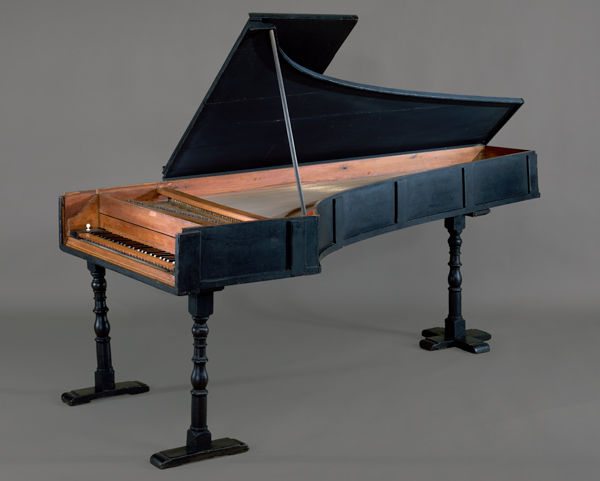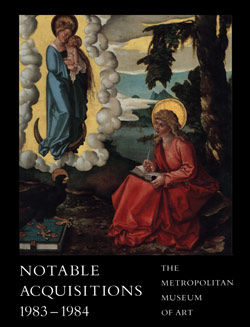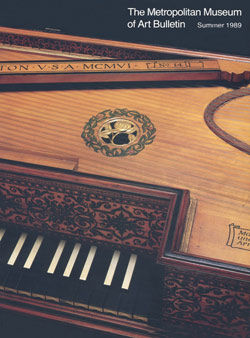Grand Piano
Ferdinand Hofmann Austrian
Not on view
This beautifully preserved cherry-wood piano, which retains the maker's fragile wax seal on a label inside, was built by Ferdinand Hofmann, a leading member of Vienna's civic keyboard-maker's association. He became its president in 1806 and won a court appointment. The striking, almost architectural decor of this instrument typifies the maker's early work. Knee levers lift the dampers and a knob over the nameplate operates a mute, or moderator. The instrument has a five-octave range (sixty-one notes) and is double-strung in the bass and middle registers and triple-strung in the treble. The piano is of the type that was customary in Mozart’s day.
Technical description: Cherry case with curved tail, angled cheeks with brass candlestick sockets, 4 square tapered legs, Viennese action, FF-f3, double-strung 1-43, triple-strung 44-61, handstop centered over keyboard operates moderator, 2 knee levers lift undivided damper rack, frame and panel lid unfinished beneath main section, prop stick hinged to lid, ornamental pierced hinges, latches and lockplate, arcaded music rack and keyboard surrounds backed with green cloth, nameboard also topped by Greek key fretwork, oval white enamel nameplaque, ebony naturals with geometric inlaid fronts, bone-capped accidentals spine slotted for removal of moderator batten, string gauge numbers inked on soundboard, bridge backpinned except 57-61.
#Sonata No. 2 in B flat Major, Allegro, "Prussian Sonatas" Wq48, by Carl Philipp Emanuel Bach, performed by Susana Alexander-Max, piano
Due to rights restrictions, this image cannot be enlarged, viewed at full screen, or downloaded.
This artwork is meant to be viewed from right to left. Scroll left to view more.






